Objectives
5G-VINNI will accelerate the uptake of 5G in Europe by providing an end to end (E2E) facility that lowers the entry barrier for vertical industries to pilot use cases and supports the pilots as the infrastructure evolves.
To achieve this, the objectives of 5G-VINNI are:
- Design an advanced and accessible 5G end to end facility.
- Build several interworking sites of the 5G-VINNI end to end facility.
- Provide user friendly zero-touch orchestration, operations and management systems for the 5G-VINNI facility.
- Validate the 5G KPIs and support the execution of E2E trial of vertical use cases to prove the 5G-VINNI capabilities.
- Develop a viable business and ecosystem model to support the life of the 5G-VINNI facility during and beyond the span of the project.
- Demonstrate the value of 5G solutions to the 5G community particularly to relevant standards and open source communities with a view to securing widespread adoption of these solutions.
Concept
The 5G-VINNI concept is to develop an (E2E 5G facility that can be used to first demonstrate the practical implementation of infrastructure to support the key 5G KPIs, and then to allow vertical industries to test and validate specific applications that are dependent upon those KPIs. However, 5G-VINNI is not intended to be simply a group of interconnected test facility sites – it is underpinned by principles that will allow for highly dynamic and flexible network architectures, service deployment and testing, that will create new technical and commercial service deployment models. These will in turn drive inter-facility interconnection to enable virtualized functions from the network and service layer to be called upon from any facility, with complete location agnosticism – a truly cloud-based network instantiation that has no functional boundaries, implemented across multiple facility sites.
A 5G-VINNI facility site is the deployment of the 5G-VINNI architecture in one administrative domain (e.g. one operator). The 5G-VINNI facility sites are classified into two different types:
- Main Facility sites: E2E 5G-VINNI facility that offers services to ICT-18-19-22 projects with well-defined Service Level Agreements.
- Experimentation Facility sites: 5G-VINNI sites that provide environments for advanced focused experimentation and testing possibilities on elements and combinations of elements of the E2E model. The results of these tests and experiments serve as input to 5G-VINNI E2E implementations and the 5G ecosystem on critical and novel areas such as software and hardware components, architecture, optimizations, models, specific standard validation etc.
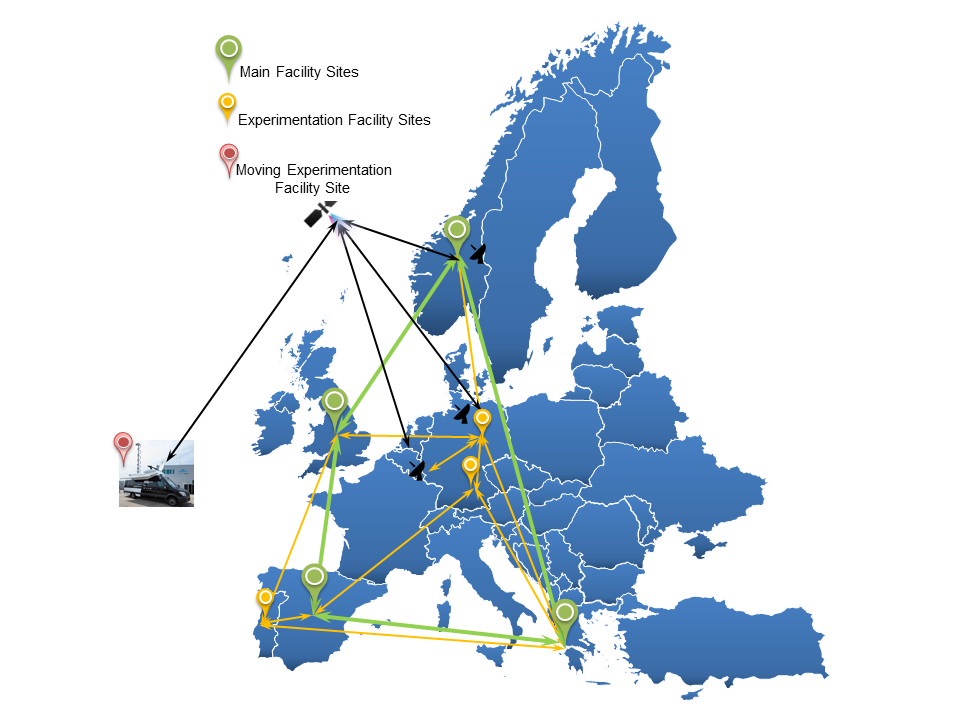
Figure1: 5G-VINNI facility with Main Facility sites and Experimentation Facility sites
The 5G-VINNI facility sites are illustrated in the Figure 1 with the Main Facility Sites (Norway, UK, Spain, Greece) and the Experimentation Facility sites (Portugal, Munich, Berlin). In addition there is a mobile experimentation facility site in the form of a rapid response vehicle for public protection and disaster relief (PPDR) use cases and potentially a boat.
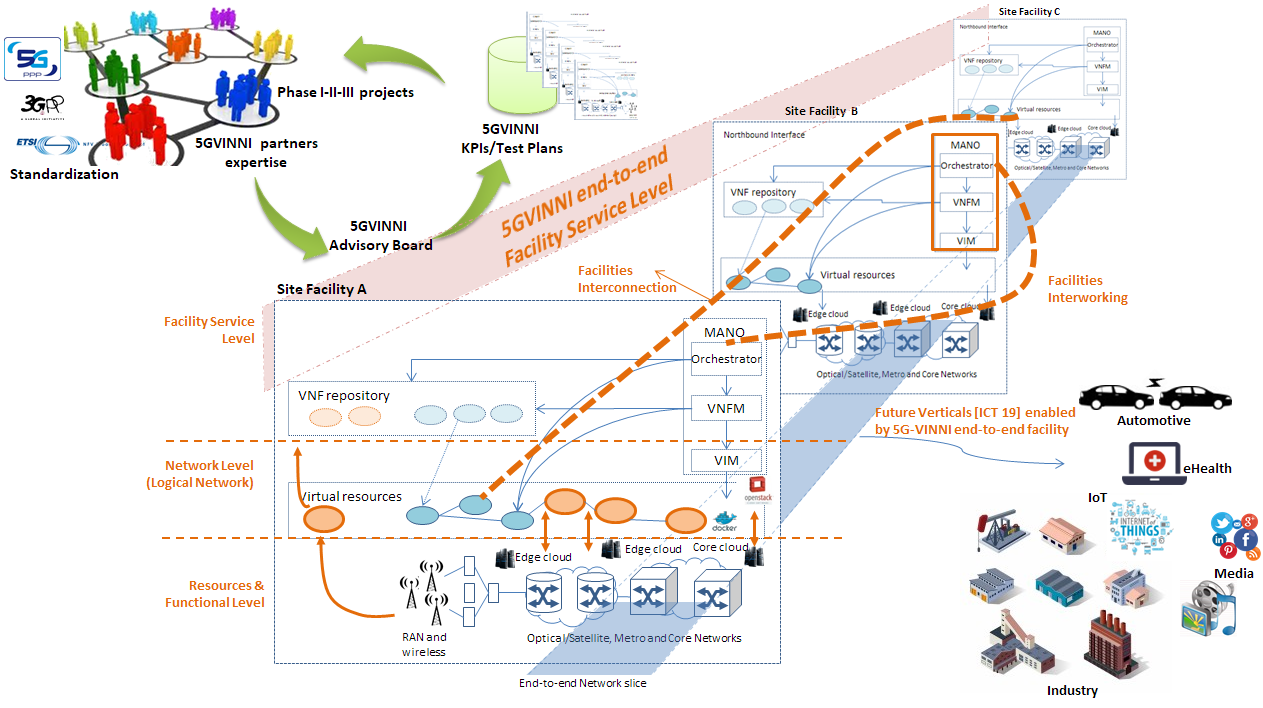
Figure: 2 5G-VINNI high level conceptual E2E facility architecture
Figure 2 depicts a high level view of the 5G-VINNI conceptual E2E facility architecture by highlighting the key elements and inputs. The various building blocks that 5G-VINNI will initially include as part of its ecosystem are organized in three layers as defined in the 5G-PPP Architecture document. These are Service Level, Network Level and Resources & Functional Level.
5G-VINNI high level conceptual E2E facility architecture
The Resources and Functional Level of the 5G-VINNI E2E facility will be comprised of the RAN, Backhaul, Mobile Core and Cloud Computing facilities, the latter coming either in the form of Edge or Centralised Clouds. The Resources & Functional Level will provide the physical resources to host the Service Level and Network Level elements (e.g. VNFs). These are interconnected to build dedicated logical networks, customized to the respective telco services, e.g., eMBB, V2X, URLLC, mMTC.
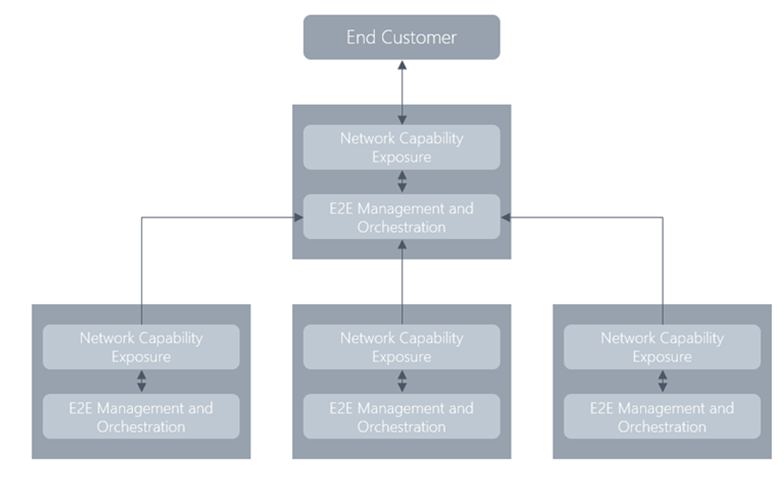
Figure 3: Recursive structure of network capability exposure and E2E Management and Orchestration
The success of 5G-VINNI is anchored in the modularity of its facility sites. This modularity guarantees the highest degrees of freedom of both 5G-VINNI facility site configurations and facility interworking. Any Service Level or Network Level VNF from any 5G-VINNI facility, can be called upon to be included within the logical network of a use case driven from another facility. This creates an unbounded capability to implement and test use cases using the consolidated shared capabilities of all facilities, rather than limiting vertical industries to individual sites. This principle has previously been identified in 5G-PPP as Recursiveness.
Recursiveness offers the potential for new business models and partner relationships whereby the service provider may both expose and consume service at different levels in the network. There is a need for a fundamental change in the technical and commercial principles of interconnect for Recursiveness to be fully embraced by the industry, but it is easy to envision some form of Recursiveness between partner operators, or between operators and large enterprise customers who may take ownership of virtualized network and service functions themselves.
Such an advanced and radical step in networking will require a similarly advanced set of testing capabilities. The framework, displayed in Figure 4 illustrates the 5G-VINNI testing functional blocks. These are overarching across the entire 5G-VINNI set of site facilities, and is based on the presence of an Experiment and Test Executor for connecting to the appropriate infrastructure components via open APIs.
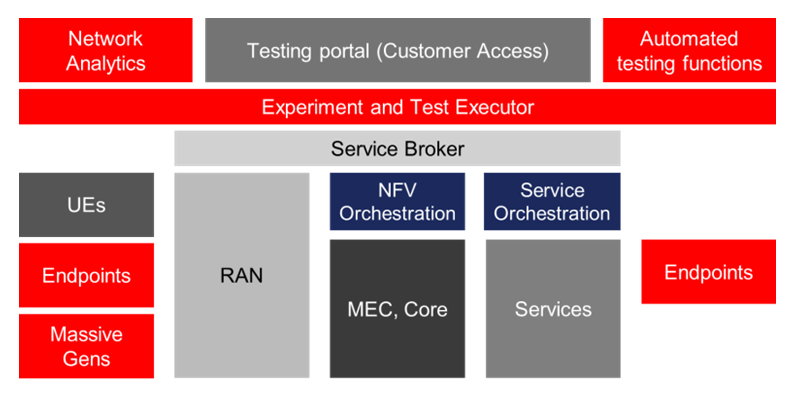
Figure 4: 5G-VINNI Test Framework
The execution of internal validation campaigns, as well as the vertical customer experiments, will be run through a user-friendly Testing Portal, which will be the point where tests are configured, test campaigns are executed, and campaigns results are visualised and analysed.
5G VINNI’s combination of this comprehensive test framework, the multiple interworking 5G RAN and 5G core infrastructures, and zero-touch E2E service orchestration will provide a unique platform for testing and trialling industry use cases. The platform will facilitate the rapid on-boarding of verticals by exposing network slice life-cycle management functions through an open API. By using the API’s, the verticals will be able to create, manage and de-commission network slices. This will offer a high level of agility in the management of connectivity services and will allow verticals to shorten their innovation cycles – quickly establishing network connectivity for E2E communication services and applying different test scenarios to the connectivity using the testing portal in order to evaluate the impact upon their E2E communication services. The fFigure below illustrates the scope of the 5G-VINNI E2E facility including the test platform and its relation to vertical use cases with the example of ICT-19 projects.
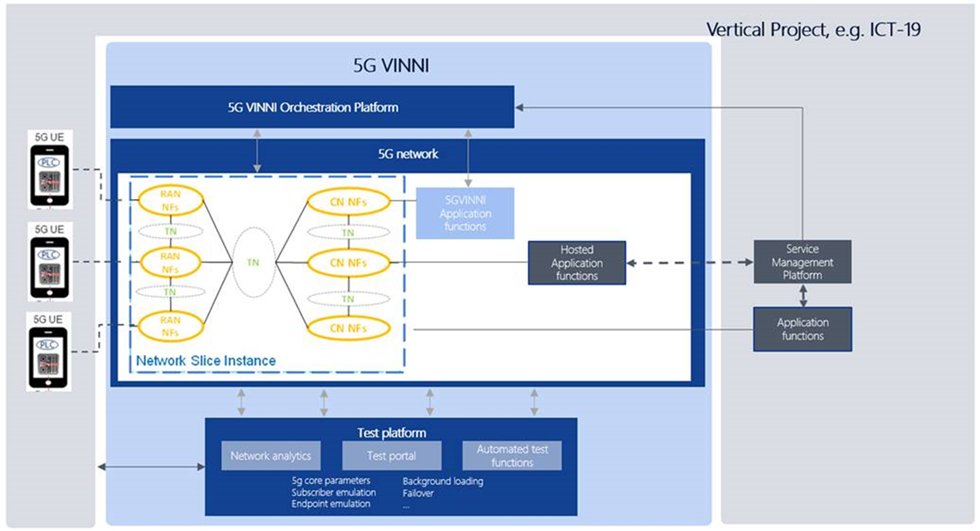
Figure 5: Basic separation of responsibilities between 5G VINNI and ICT-19 projects



